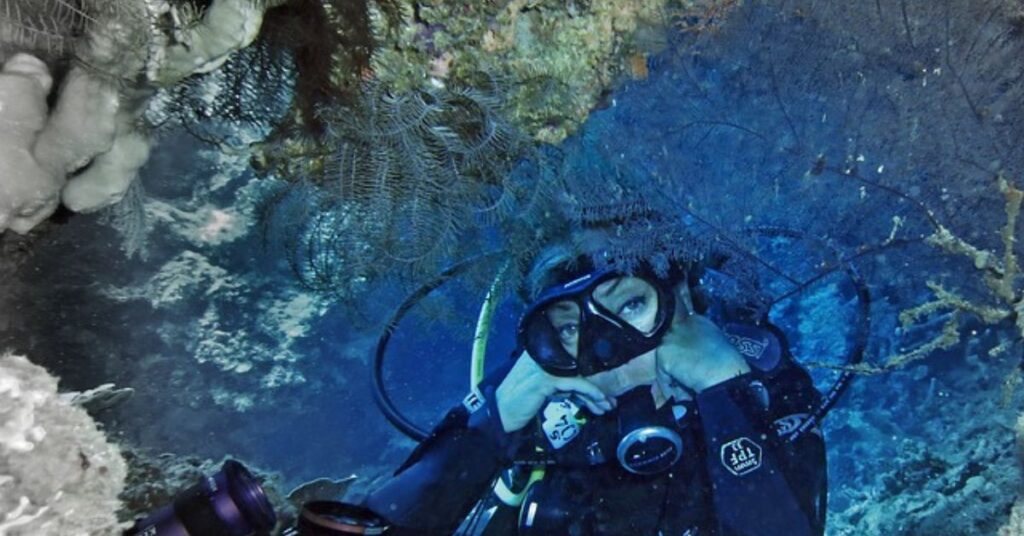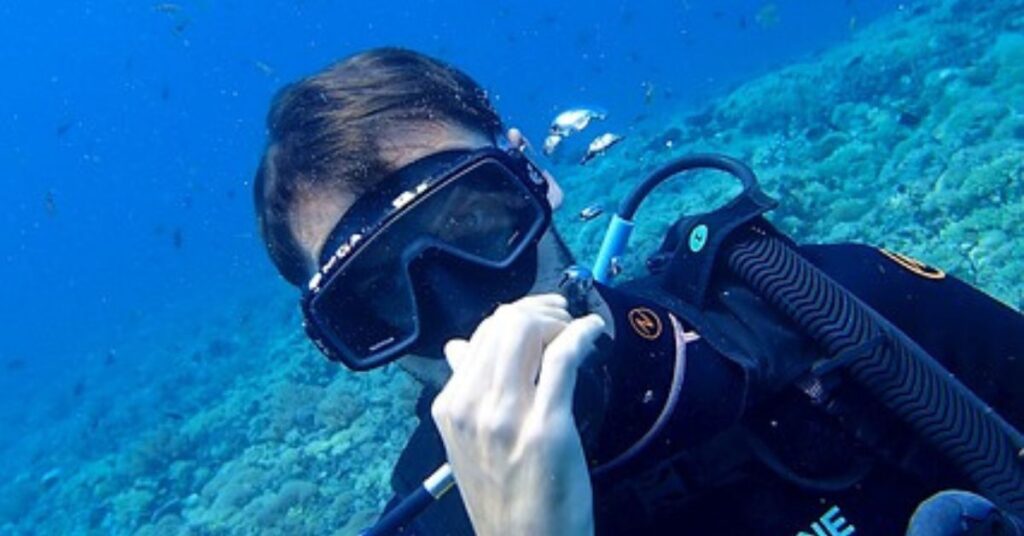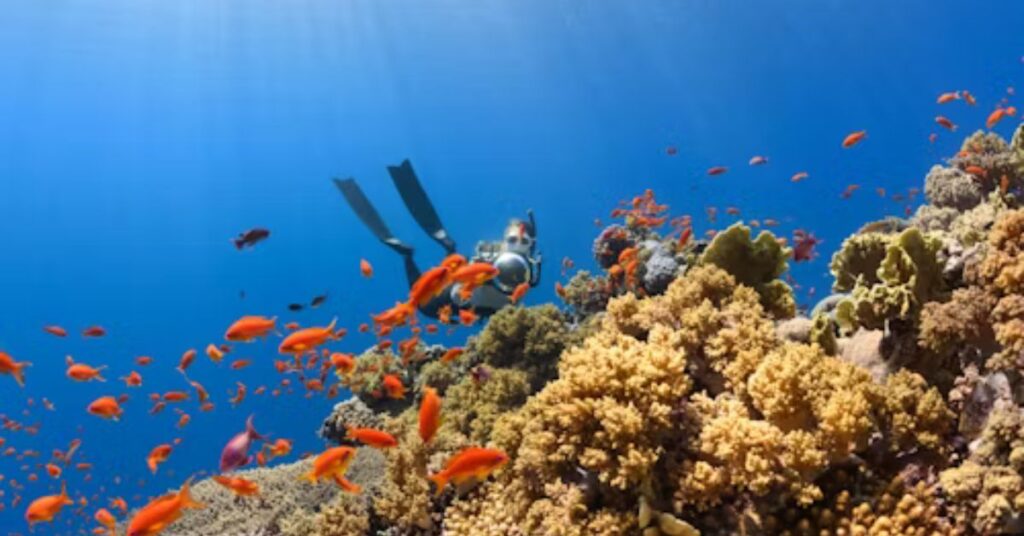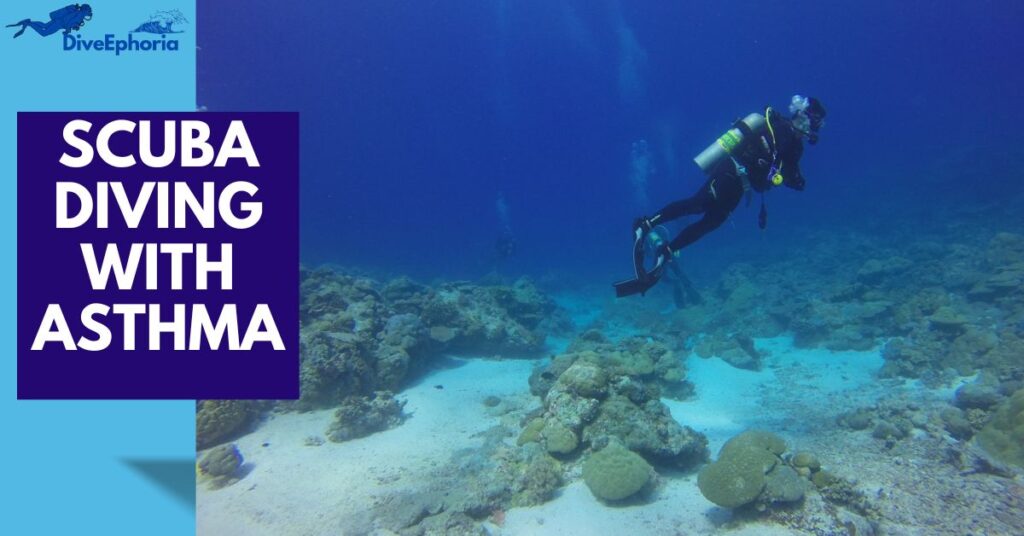
Table of Contents
Introduction
Scuba diving offers a gateway to the underwater world, allowing divers to explore the ocean’s beauty firsthand. However, breathing underwater is not as simple as it seems. A reliable scuba diving breathing apparatus is essential for safety, efficiency, and comfort. In this comprehensive guide, we’ll explore different types of breathing equipment, breathing techniques, and expert tips to enhance your diving experience.
What Is a Scuba Diving Breathing Apparatus?

A scuba diving breathing apparatus is a system that allows divers to breathe underwater by supplying compressed air or an alternative breathing gas. The most common type is the self-contained underwater breathing apparatus (SCUBA), which consists of several key components:
- Air Tank – Stores compressed air or a specialized gas mix.
- Regulator – Reduces the high-pressure air from the tank to a breathable level.
- Buoyancy Control Device (BCD) – Helps control depth and buoyancy.
- Mouthpiece & Hoses – Connects the regulator to the diver’s mouth or full-face mask.
Types of Scuba Diving Breathing Equipment

1. Open-Circuit Scuba
This is the most common type of scuba system. It works by delivering air from a tank through a regulator, and the diver exhales into the water, releasing bubbles.
Pros:
- Simple and widely available.
- Lower initial cost.
- Easy to use and maintain.
Cons:
- Less efficient air consumption.
- Creates noise and bubbles that may disturb marine life.
2. Closed-Circuit Rebreathers (CCR)
Rebreathers recycle the exhaled air by removing carbon dioxide and adding oxygen, making them highly efficient for deep and technical dives.
Pros:
- Extended dive time due to efficient gas use.
- Silent operation for closer encounters with marine life.
- Produces fewer bubbles, reducing environmental impact.
Cons:
- Expensive and requires specialized training.
- More maintenance and technical knowledge needed.
3. Surface-Supplied Air Systems
This system connects the diver to an air supply at the surface via a hose, commonly used for commercial and military diving.
Pros:
- Unlimited air supply from the surface.
- Increased safety due to backup systems.
Cons:
- Limited mobility compared to scuba systems.
- More equipment and personnel required.
Scuba Diving Breathing Techniques for Efficiency and Safety

1. Diaphragmatic Breathing
Using the diaphragm rather than shallow chest breathing allows divers to maximize air efficiency.
2. Slow and Deep Breathing
Taking slow, deep breaths reduces air consumption and prevents overexertion.
3. Avoiding Rapid Breathing
Rapid or shallow breathing can lead to hyperventilation and increase the risk of panic underwater.
4. Breathing Exercises for Scuba Diving
Practicing breathing exercises on land, such as yoga and breath-hold training, can improve lung capacity and relaxation while diving.
Common Scuba Diving Breathing Problems and How to Solve Them
1. Shortness of Breath After Scuba Diving
This may indicate overexertion, improper breathing techniques, or a medical issue. Ensure gradual ascents and proper rest between dives.
2. Scuba Diving Breathing Through Nose
Most divers breathe through their mouths using a regulator, but full-face masks allow natural nose breathing.
3. Holding Breath While Scuba Diving
Holding your breath can be dangerous due to the risk of lung overexpansion injuries. Always maintain a steady breathing rhythm.
Conclusion
Understanding the right scuba diving breathing apparatus and techniques is crucial for a safe and enjoyable underwater experience. Whether you’re a beginner or an advanced diver, using the best breathing equipment and proper techniques will enhance your dives. Ready to explore the deep? Check out our recommended diving gear for your next adventure!
FAQs
What Happens If You Hold Your Breath While Scuba Diving?
Holding your breath while ascending can cause lung overexpansion injuries, which may lead to serious complications.
Is It Hard to Breathe While Scuba Diving?
No, as long as you use the correct equipment and breathing techniques. Proper training makes breathing underwater feel natural.
How Do You Breathe Properly When Scuba Diving?
Breathe slowly and deeply through your regulator, avoiding shallow or rapid breaths.
Can You Breathe Through Your Nose When Scuba Diving?
Standard scuba regulators require mouth breathing, but full-face masks allow for nose breathing.


